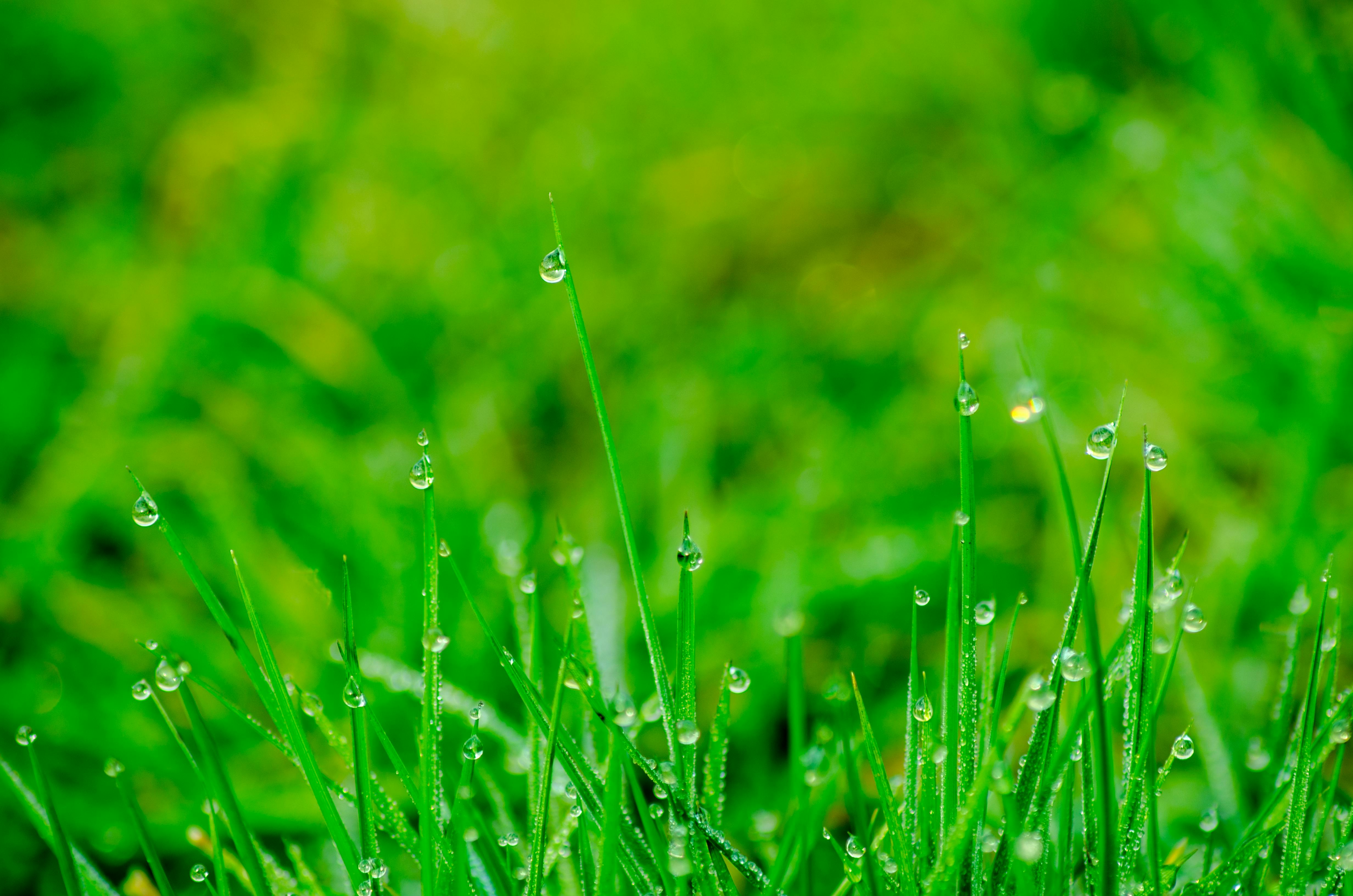Summer is a great time to enjoy the outdoors and show off your lawn. With the right amount of water and care, you can ensure your lawn looks its best all season long. But how much water should you give your lawn during the summer? This article will provide helpful tips on watering your lawn during the summer months to keep it looking lush and healthy.In the summer, it is recommended to water your lawn deeply and infrequently. Depending on the type of grass and other environmental factors, you should water your lawn for a total of 1 to 2 hours per week. Watering for longer than this can lead to excessive evaporation, runoff, and leaching of nutrients from the soil.
Estimating the Water Needs of Your Lawn in the Summer
Taking care of your lawn during the summer months is essential. Proper watering can help your grass stay healthy and green, but over-watering can lead to problems such as disease, fungus and poor root development. Estimating how much water your lawn needs will help you keep it healthy without wasting unnecessary resources. Here are a few tips to help you estimate the water needs of your lawn in the summer.
The first step in estimating how much water your lawn needs is to assess its soil type. Sandy soils typically require more frequent watering than clay soils because they don’t hold moisture as well. Clay soils tend to retain more water and generally require less frequent watering. Knowing the type of soil you have will help you determine how often and how much water your lawn needs.
You should also consider other factors that can affect how much water your lawn needs, such as temperature, humidity, wind speed and rainfall amounts. Hotter temperatures mean that more water is lost through evaporation and transpiration, so extra watering may be needed during hotter days or weeks. Humidity levels also play a role in how much water is lost from the soil; high humidity levels mean less evaporation, so less water is needed. Wind speed also affects evaporation rates; higher winds mean more evaporation, so more frequent watering may be necessary during windy days or weeks. Finally, consider recent rainfall amounts when assessing how much water your lawn needs; if there has been sufficient rainfall recently, additional watering may not be necessary.
Finally, it’s important to remember that different types of grasses have different watering requirements. Cool-season grasses such as Kentucky bluegrass typically need more frequent watering than warm-season grasses like Zoysia or Bermuda grasses which need less frequent but deeper irrigation sessions when they are actively growing during summer months. Knowing what type of grass you have will help you determine its specific watering requirements for optimal health during the summer months.
By taking into account these factors – soil type, temperature and humidity levels, wind speed and rainfall amounts – you can better estimate how much water your lawn needs in order to keep it healthy during the summer months without wasting resources through over-watering or under-watering it.
Advantages of Proper Lawn Irrigation During Summer
Proper lawn irrigation during the summer months is essential for keeping your lawn healthy and vibrant. With the right irrigation system in place, you can ensure that your lawn receives the water it needs to stay green and lush. There are many advantages to proper lawn irrigation during summer, such as:
Reduced Stress on Your Lawn: Proper lawn irrigation can help reduce stress on your lawn by providing the right amount of water to keep it healthy. This helps keep your grass from becoming too dry or too wet, which can lead to unhealthy conditions that can damage your lawn in the long run.
Better Soil Health: Proper irrigation helps maintain a healthy balance of nutrients in the soil, which is important for plant growth and health. As water is applied to the soil, it helps break down organic matter and release essential nutrients, such as nitrogen and phosphorus, into the soil. This helps maintain a healthy level of nutrients, which leads to healthier plants and grasses.
Less Water Waste: With proper irrigation techniques, you are able to ensure that only the right amount of water is applied to each area of your lawn. This reduces water waste and helps you save money on your water bill by using less water. Additionally, this practice also benefits the environment by helping conserve precious natural resources.
Increased Plant Growth: By providing adequate amounts of water to your plants and grasses during summer months, you can encourage healthier root systems and improved plant growth. Proper irrigation techniques will ensure that plants have access to enough moisture while also avoiding overwatering, which can lead to disease or nutrient deficiencies.
Overall, having a proper irrigation system in place during summer months is essential for keeping your lawn looking its best. By maintaining a healthy balance of nutrients in the soil and reducing water waste with proper irrigation techniques, you can ensure that your lawn stays green and vibrant throughout the season – all while saving money on utility bills!
Factors Affecting How Much You Should Water Your Lawn in the Summer
The amount of water that needs to be supplied to your lawn during the summer months can vary greatly depending on a variety of factors. The type of grass you have, the amount of sun exposure, the soil type, and even local weather conditions all play a role in determining how much water is necessary. To ensure that your lawn stays healthy and green throughout the summer, it is important to understand these factors and adjust your watering schedule accordingly.
The type of grass you have will largely determine how much water it needs in order to stay healthy. For example, cool-season grasses such as Kentucky bluegrass and ryegrass will require more frequent watering than warm-season grasses such as bahia or Bermuda grass. Additionally, certain types of turfgrass may require more frequent watering than other varieties due to their higher water requirements. Knowing what type of grass you have should be your first step in determining how much water you need to supply.
The amount of sun exposure is another important factor when it comes to deciding how much water you should use on your lawn. If your lawn is exposed to direct sunlight for long periods of time each day, then it will likely require more frequent watering than if it were partially shaded or had less direct sunlight exposure. Additionally, if your lawn has areas where trees or other structures cast shadows over parts of it throughout the day, then those areas may require less frequent watering as well.
Soil type is also an essential factor when it comes to deciding how much water should be applied to a lawn. Soils with high clay content tend to retain more moisture than sandy soils, so they generally require less frequent irrigation than sandy soils do. Furthermore, soil compaction can also affect how quickly moisture is lost from the soil and thus must be taken into account when watering.
Finally, local weather conditions can also play an important role in determining how often you need to water your lawn. In general, hot and dry days will require more frequent irrigation while cooler and wetter days can usually get by with less frequent applications. Additionally, if there has been recent rainfall then this should reduce the amount that needs to be watered manually.
By taking all these factors into account when deciding how often to water your lawn during the summer months, you can ensure that it stays healthy and green all season long!
When to Cut Back on Watering Your Lawn in the Summer
Watering your lawn during the summer months is essential for keeping it healthy and looking its best. However, over-watering can lead to problems such as soil erosion, nutrient leaching, and root rot. To ensure your lawn remains healthy during hot summer months, it is important to know when to cut back on watering.
A good rule of thumb for summer watering is to water your lawn about once every two weeks. This will help keep the soil moist and encourage deeper root growth. During periods of extreme heat and drought, you may need to increase the frequency of watering. However, keep in mind that too much water can be just as damaging as not enough water.
When deciding how much water your lawn needs, consider factors such as soil type and weather conditions. For example, sandy soils will require more frequent watering than clay soils because they tend to dry out more quickly. Additionally, if you live in a climate where there are frequent rainstorms during the summer months, you may not need to water your lawn as frequently since natural rainfall will provide enough moisture for your grass.
Finally, be sure to check the grass regularly for signs of stress or overwatering. Wilting or yellow patches are common signs of too much or too little water. If you notice these signs on your lawn, adjust your watering schedule accordingly until the grass has recovered. By following these tips and keeping an eye on your lawn throughout the season, you can ensure that it stays healthy and vibrant all summer long!

1. Overwatering
One of the most common mistakes homeowners make when watering their lawn in the summer is overwatering. This can be due to a lack of knowledge about how much water is necessary for a healthy lawn, or simply by not paying attention to how much they are watering. Overwatering can cause a variety of problems like shallow root growth, disease and weed growth, and an increase in water bills. To avoid overwatering, it’s important to understand how much water your lawn needs and only apply the amount recommended by experts.
2. Watering at the Wrong Time of Day
When watering your lawn in the summer months, it’s important to pay attention to when you are watering. It is generally recommended that homeowners avoid watering during the heat of the day when evaporation is at its peak. Instead, aim to water early in the morning or late evening when temperatures are cooler and evaporation rates are lower. This will help ensure that your lawn gets the most out of its irrigation.
3. Not Adjusting for Rainfall
Another common mistake homeowners make when watering their lawn in the summer is not adjusting for rainfall amounts. Even if you have an automated irrigation system, it’s important to pay attention to weather forecasts and adjust accordingly so that your plants do not become over-watered or under-watered. If you have had a significant amount of rain recently, consider reducing your irrigation time or skipping a day altogether.
4. Watering Too Quickly
When watering your lawn in the summer months, it’s important to take things slow and steady rather than rushing through it quickly. If you water too quickly, you run the risk of runoff from heavy downpours which can cause soil erosion and loss of valuable nutrients from your soil. Instead, try using a slow drip or trickle irrigation system which will help ensure that all parts of your lawn get an equal amount of water without runoff.
1. Water Early in the Morning
It is best to water your lawn early in the morning, before the heat of the day sets in. This ensures that your lawn will absorb as much water as possible before it evaporates. Additionally, watering early helps to reduce the amount of disease and fungus that can build up due to high levels of humidity during mid-day hours. It is also beneficial to avoid watering late in the evening, as it can cause fungus to form and also encourage diseases like rust.
2. Keep Watering Evenly
When you water your lawn, try to keep it evenly moist throughout the week so that all areas receive an equal amount of water and nutrients. To do this, divide your lawn into several sections and make sure each section gets watered approximately every other day. This will help keep soil healthy and promote deep root growth which is essential for a healthy lawn.
3. Use a Sprinkler System
Using a sprinkler system is one of the most efficient ways to water your lawn during the summer months. A sprinkler system allows you to set specific times for watering so that you don’t have to worry about forgetting or manually turning on the hose each day. Additionally, sprinklers are able to evenly distribute water over a larger area than manual watering with a hose or can.
4. Check for Leaks
Before beginning any type of watering routine, it is important that you check for any leaks or clogs in your irrigation system. If there are any leaks or clogs present, they could lead to an inefficient use of water which could cost you more money in the long run as well as damage your lawn due to uneven distribution of moisture.
5. Don’t Overwater
Finally, be sure not to overwater your lawn during the summer months as this can do more harm than good by encouraging fungal growth and washing away essential nutrients from soil. Aim for approximately 1 inch per week and adjust accordingly based on weather conditions and soil type.<
Benefits of Letting Your Lawn Go Dormant in the Summer
During the summer months, your lawn may become dry and dormant due to the heat and lack of water. Although this may seem like a bad thing, letting your lawn go dormant in the summer can actually have many benefits.
One of the main benefits of allowing your lawn to go dormant is that it can help conserve water. During times of drought or when water restrictions are in place, allowing your lawn to go dormant can help reduce water usage. This is because dormant grass does not require as much watering as actively growing grass does.
Another benefit of allowing your lawn to go dormant is that it can help reduce stress on your lawn mower. When grass is actively growing, it needs to be mowed more frequently which can put a strain on your mower. When grass goes dormant, it stops growing so there is no need to mow as often which can save wear and tear on your mower.
Finally, allowing your lawn to go dormant can give you more free time during the summer months. It takes time and effort to keep an actively growing lawn looking its best but when it goes dormant you don’t have to worry about regular maintenance such as mowing and watering which can leave you with more free time during the summer months.
Allowing your lawn to go dormant in the summer months has many benefits such as conserving water, reducing stress on your mower, and giving you more free time. So if you’re looking for a way to make caring for your lawn easier during the hot summer months, consider letting it go dormant!

Conclusion
Watering your lawn in the summer is essential to its health and growth. Depending on your climate, you may need to water more or less frequently. Deep watering every few days is best, as it encourages deeper root growth and helps your lawn withstand drought conditions. If you have an irrigation system, be sure to adjust it periodically to ensure proper coverage. Additionally, use a soil moisture meter to help you determine how much water your lawn needs. With proper care and maintenance, your lawn will remain healthy and green all season long!
In summary, the best way to determine how long you should water your lawn in the summer is by evaluating the climate and soil type of your area. Additionally, consider installing an irrigation system or using a soil moisture meter for greater accuracy. With these steps in mind, you can ensure that your lawn remains healthy and green all summer long!

